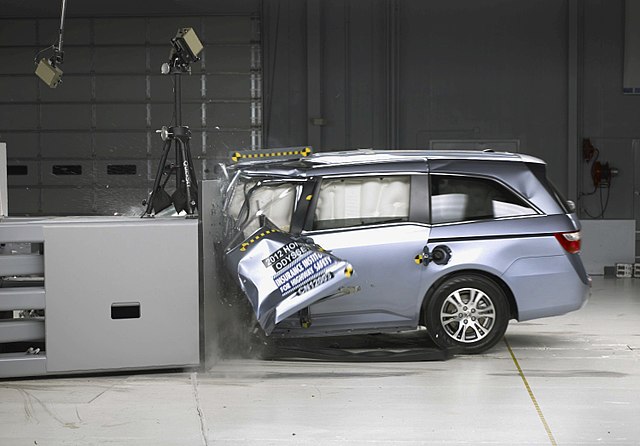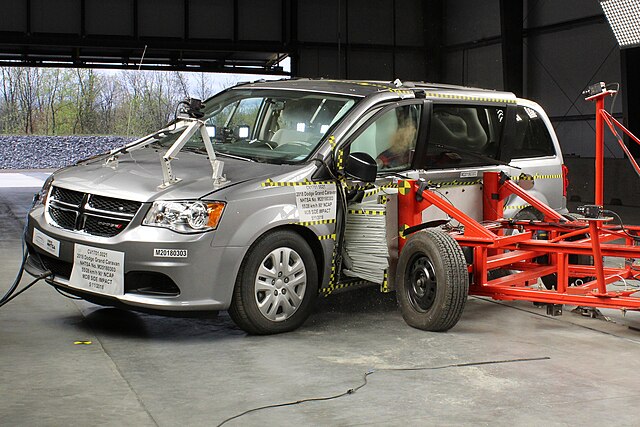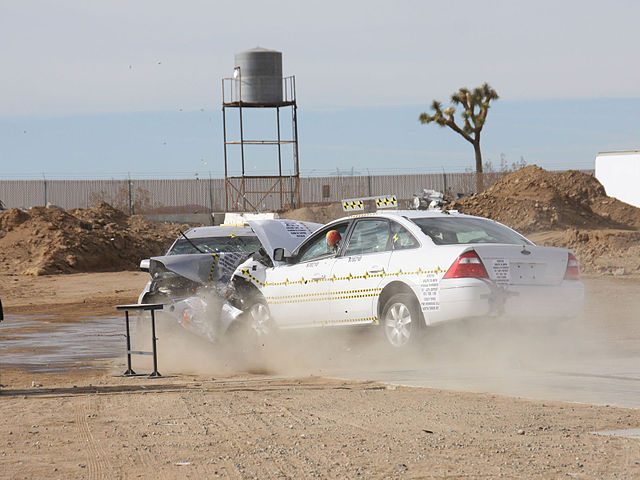A crash test is a form of destructive testing usually performed in order to ensure safe design standards in crashworthiness and crash compatibility for various modes of transportation or related systems and components.
Frontal small-overlap crash test of a 2012 Honda Odyssey
2018 Dodge Grand Caravan being struck by a mobile deformable barrier at 62 km/h
2016 Honda Fit striking a wall head-on at 56 km/h
NHTSA research crash test involving two Ford Five Hundreds
Crashworthiness is the ability of a structure to protect its occupants during an impact. This is commonly tested when investigating the safety of aircraft and vehicles. Different criteria are used to figure out how safe a structure is in a crash, depending on the type of impact and the vehicle involved. Crashworthiness may be assessed either prospectively, using computer models or experiments, or retrospectively, by analyzing crash outcomes. Several criteria are used to assess crashworthiness prospectively, including the deformation patterns of the vehicle structure, the acceleration experienced by the vehicle during an impact, and the probability of injury predicted by human body models. Injury probability is defined using criteria, which are mechanical parameters that correlate with injury risk. A common injury criterion is the head impact criterion (HIC). Crashworthiness is measured after the fact by looking at injury risk in real-world crashes. Often, regression or other statistical methods are used to account for the many other factors that can affect the outcome of a crash.

Airbag on a Bell OH-58 Kiowa helicopter





